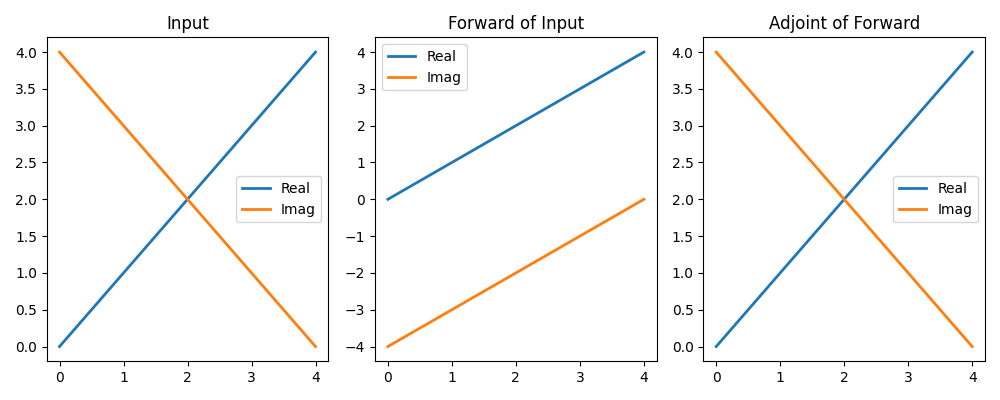Note
Go to the end to download the full example code
Conj#
This example shows how to use the pylops.basicoperators.Conj
operator.
This operator returns the complex conjugate in both forward and adjoint
modes (it is self adjoint).
import matplotlib.pyplot as plt
import numpy as np
import pylops
plt.close("all")
Let’s define a Conj operator to get the complex conjugate of the input.
M = 5
x = np.arange(M) + 1j * np.arange(M)[::-1]
Rop = pylops.basicoperators.Conj(M, dtype="complex128")
y = Rop * x
xadj = Rop.H * y
_, axs = plt.subplots(1, 3, figsize=(10, 4))
axs[0].plot(np.real(x), lw=2, label="Real")
axs[0].plot(np.imag(x), lw=2, label="Imag")
axs[0].legend()
axs[0].set_title("Input")
axs[1].plot(np.real(y), lw=2, label="Real")
axs[1].plot(np.imag(y), lw=2, label="Imag")
axs[1].legend()
axs[1].set_title("Forward of Input")
axs[2].plot(np.real(xadj), lw=2, label="Real")
axs[2].plot(np.imag(xadj), lw=2, label="Imag")
axs[2].legend()
axs[2].set_title("Adjoint of Forward")
plt.tight_layout()

Total running time of the script: (0 minutes 0.493 seconds)
